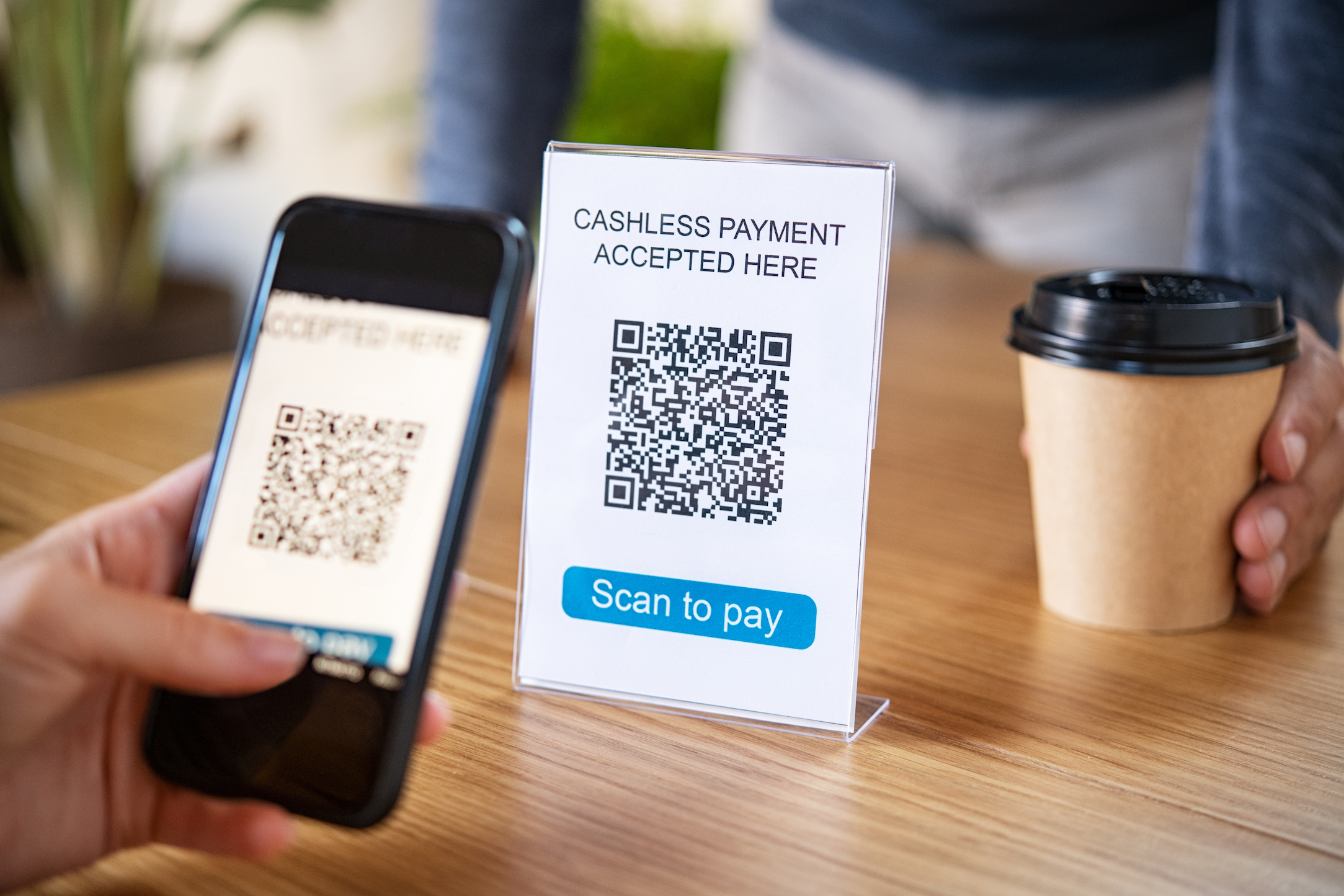QR Payments for Small Business: An All-In-One Guide


Nico Ruggieri
Apr 6, 2023
3 min read
QR code payments are quickly becoming a popular payment method for small businesses. This technology allows customers to pay for products and services by scanning a QR code using their smartphone. It's a fast, secure, contactless and convenient payment solution that’s easy to use for both customers and business owners, especially in a fast-moving setting like the retail industry.
In this article, we’ll explore the benefits of QR payments for small businesses, the technology behind QR code payments, and how small business owners can implement it successfully.
What Are QR Payments?
QR (Quick Response) payments are a form of mobile payment that allows users to make transactions using their smartphones by scanning QR codes. A QR code is a two-dimensional barcode that contains information about a payment transaction, such as the payment amount and the recipient's payment details.
To use QR payments, users only need a mobile wallet app that supports QR code scanning. Once they have the app installed on their smartphone, they can scan the QR code displayed by the merchant at the point of sale or in an invoice.
QR payments offer several advantages over traditional payment methods such as cash and credit cards. They are faster and more convenient and eliminate the need for users to carry cash or wait for credit card authorization. But there are additional benefits to consider, too.
Benefits of QR Payments for Businesses
- Low setup costs: QR payments require minimal setup costs for merchants. All they need is a QR code that can be easily generated and printed on a receipt or displayed on a screen.
- Cost-effective: QR payments are typically cheaper than traditional payment methods like credit card transactions, making them an attractive option for small businesses with limited budgets.
- Secure: QR payments are encrypted, which makes them more secure than traditional payment methods like cash or credit cards.
- Increased sales: By offering QR payments as a payment option, small businesses can attract customers who prefer to pay with their mobile devices. This can result in increased sales and customer satisfaction.
Are There Any Drawbacks for QR Payments?
As with any change in your business, there are also some potential disadvantages that should be considered before implementing QR codes. Here are some to consider:
- Limited acceptance: While QR payments are becoming more popular, they are not yet widely accepted by all customers. Some customers, especially those in older demographics, may not be familiar with the technology or may not have a smartphone capable of scanning QR codes.
- Dependence on technology: QR payments require reliable internet connectivity and functioning hardware such as smartphones and scanners. Small businesses that experience technical issues or those located in remote areas may struggle to accept QR payments and lose sales because of it.
- Security concerns: While QR payments are generally considered to be secure, there is always a risk of fraud or hacking. This is an unfortunate reality of technology in a world where Forbes predicts the cost of cybercrime will exceed $8 trillion in 2023.
How to Implement QR Payments In Your Business (5 Steps)
If you’re learning towards implementing QR codes in your small business, here are some steps you can take to do it successfully.
1. Choose a QR Payment Provider
Research and select a QR payment provider that offers the features and pricing that fit the needs of your small business. Not all retail/swipe vendors are one-size-fits-all, so the payment solutions company you choose needs to work for you.
2. Generate the Right Amount of QR Codes
QR codes can be created using free online tools or through your chosen payment provider. You’ll want to generate unique QR codes for each product or service that you offer or make sure you have an organized list of the goods/services you’ll be selling using the technology.
3. Choose a Strategy for Displaying QR Codes
Display your QR codes in prominent locations such as on packaging, menus, or marketing materials. Using a data-driven or AB testing model can help you figure out what’s working and what might need to be adjusted.
4. Train Staff
Train your staff on how to process QR payments and troubleshoot any issues that may arise. If you employ older staff, make sure they feel comfortable with the system and be sure to educate along the way if changes are needed.
5. Promote QR Payments
Promote the availability of QR payments to your customers through signage, social media, or email newsletters to encourage adoption and drive sales.
QR payments can be an excellent option for small businesses looking to offer customers a fast, convenient, and cost-effective payment method. By adopting QR payments, small businesses can also stay competitive and attract new customers who prefer to pay with their mobile devices.
Contact us today to learn more about setting up fast and smooth payment processing in your small business.
